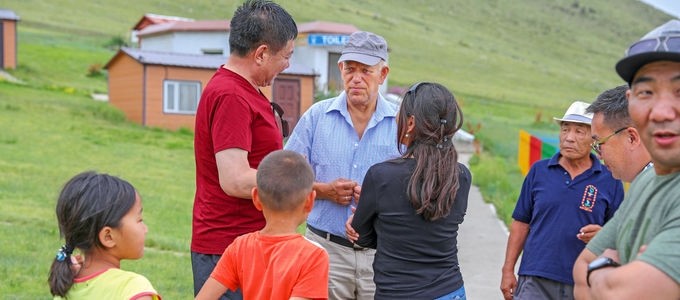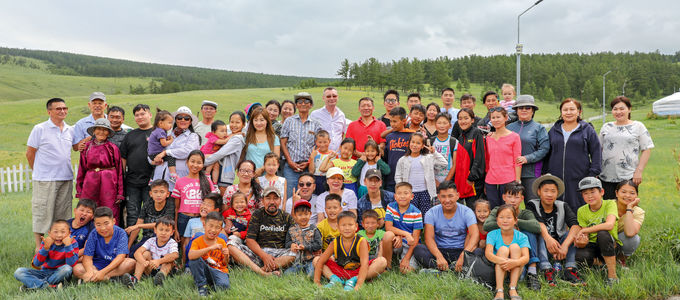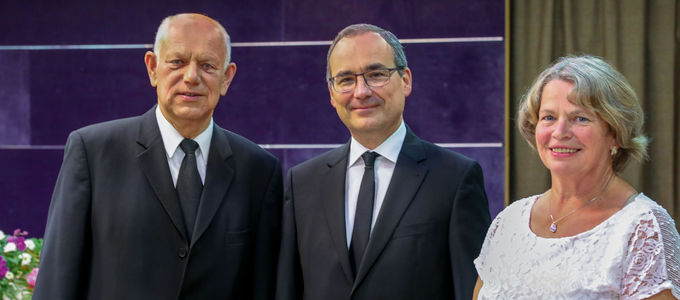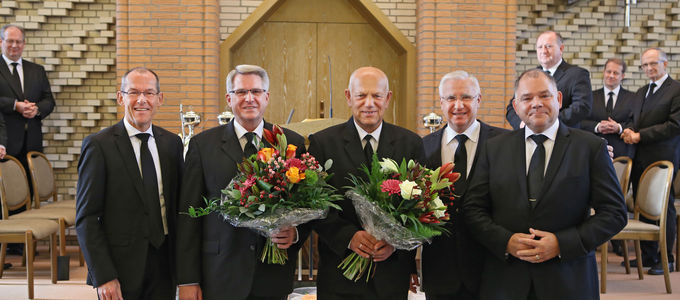Unity bridges distance
Lothar Racinowski has a big heart for the people of Mongolia. The now retired District Evangelist was involved in establishing New Apostolic congregations in the country from the very beginning.
Everything started in 1992, he says. His first trip to Mongolia was together with the Bishops Klaus Katens and Ulrich Krause. In the beginning, the men wanted to start with their work immediately despite the seven-hour time difference—and promptly fell asleep at the table. On subsequent trips they decided to rest up first and give themselves a chance to actually arrive, Lothar Racinowski says.
It took a long time until the first congregation in the Mongolian capital of Ulaanbaatar began to grow. “But I experienced God. Once, a day before we were actually to leave for home again, we suddenly lost the room we had been renting.” But that same day still, a new opportunity opened up in an apartment building that was owned by one of the brothers—including a room in which divine services could be conducted.
“But I experienced God.”
It took a long time before the first congregation in the Mongolian capital of Ulaanbaatar began to grow. “But I experienced God. Once, a day before we were actually to leave for home again, we suddenly lost the room we had been renting. But that same day still, a new opportunity opened up in an apartment building that was owned by one of the brothers—including a room in which divine services could be conducted. After that the congregation began to grow.”
“We met really nice and hospitable people,” he says, who also open their yurt for strangers, offer them food, and if necessary, even a place to sleep. But nomadic life is hard. The children are often away all week, living with relatives or acquaintances in the next bigger city, where they go to school. On Fridays they ride back home across the vast plains.
Fluctuation in the congregations
“Distance is not a big deal for the Mongolians,” Lothar Racinowski says. Whether it is 100, 200, or 300 kilometres—it doesn’t make much of a difference in a country that is five times as big as Germany. That is why combined services—and a church feast every now and then—are important for the unity of the congregations. The members get together, rather informally, they eat, play games, and talk about what God has done for them. It strengthens the bonds between the members even over long distances.
The Mongolian congregations are in a constant state of flux. New people come in, others leave, whatever. “The dedication of our church in Ulaanbaatar in 1997 gave us a real boost. Before, the members gathered in rented premises, and now the congregation could gather in a real church.” That really brought the congregation together and was a motivating factor.
Church services in a yurt
There are no solid houses on the Mongolian plains. So how do we picture a divine service in a yurt? The yurt is a circular tent with a collapsible wooden frame. Two- to three-metre high posts support the crown. The structure is covered by several layers: a thin cotton sheet, then wool felt for thermal insulation, and then waterproof canvas.
So, how are services conducted in a yurt? Lothar Racinowski looks at me in disbelief and then frowns. Then he says, “Well, like here.” People sit on the right and left on the beds, and a few chairs are added. A table serves as an altar. “For a while we even had an electronic keyboard,” he adds. And what about the rest, I ask. “Just like here.”
God accomplished everything
The District Evangelist’s eyes sparkle when he speaks about Mongolia. The country and its people have really gotten into his blood. When he thinks about his trip to Mongolia this past July 2018 in connection with the Chief Apostle’s visit there, he becomes wistful. It was Lothar Racinowski’s last official trip.
On returning from his trips, people often wanted to know from the District Evangelist what he had done and accomplished in Mongolia. “Nothing,” he replied, “because I am convinced that it is God who has accomplished all this.”
Article info
Author:
Date:
Keywords:
Jens Lange
30.10.2018
Mongolia,
International,
Congregational life












